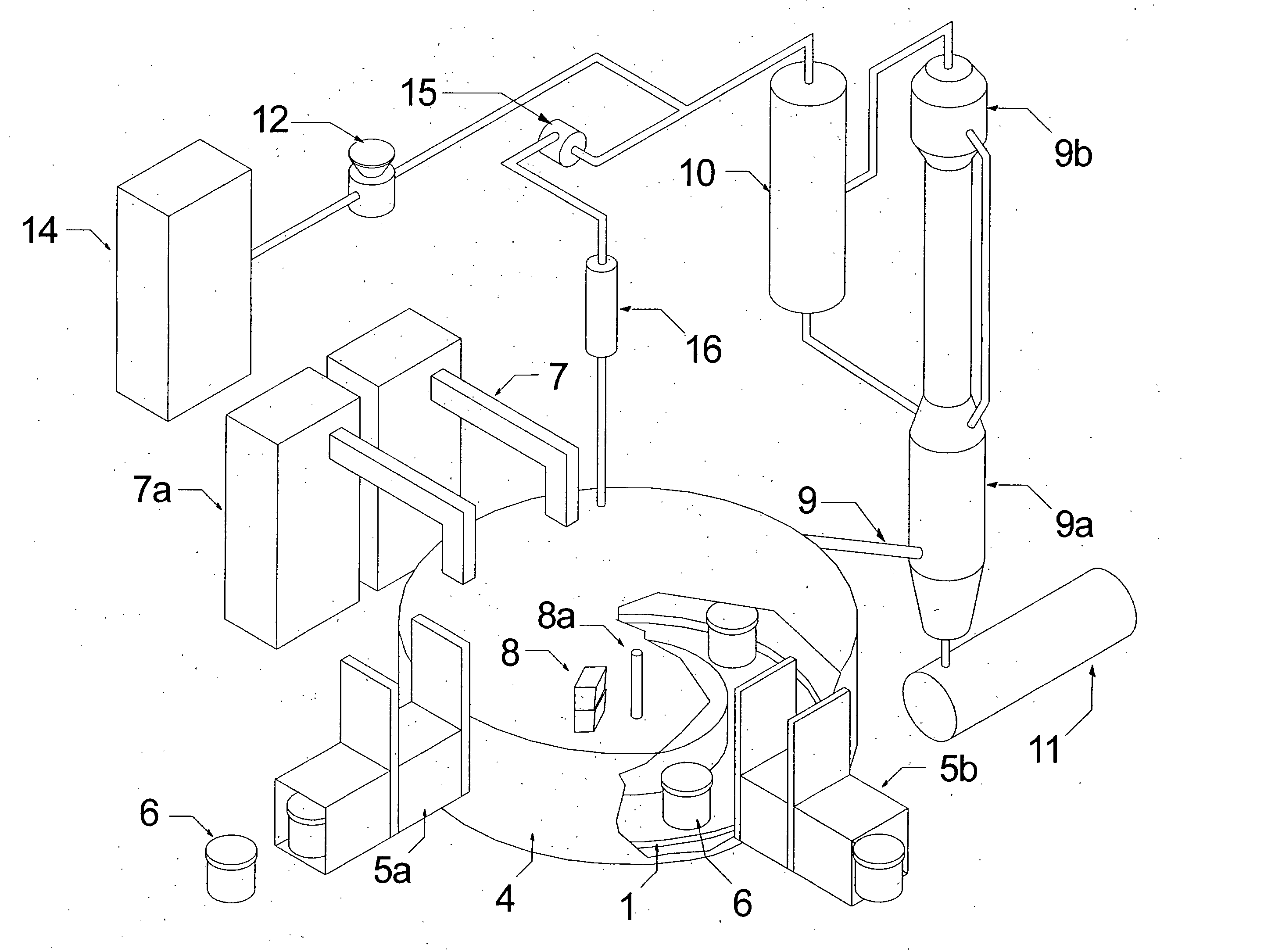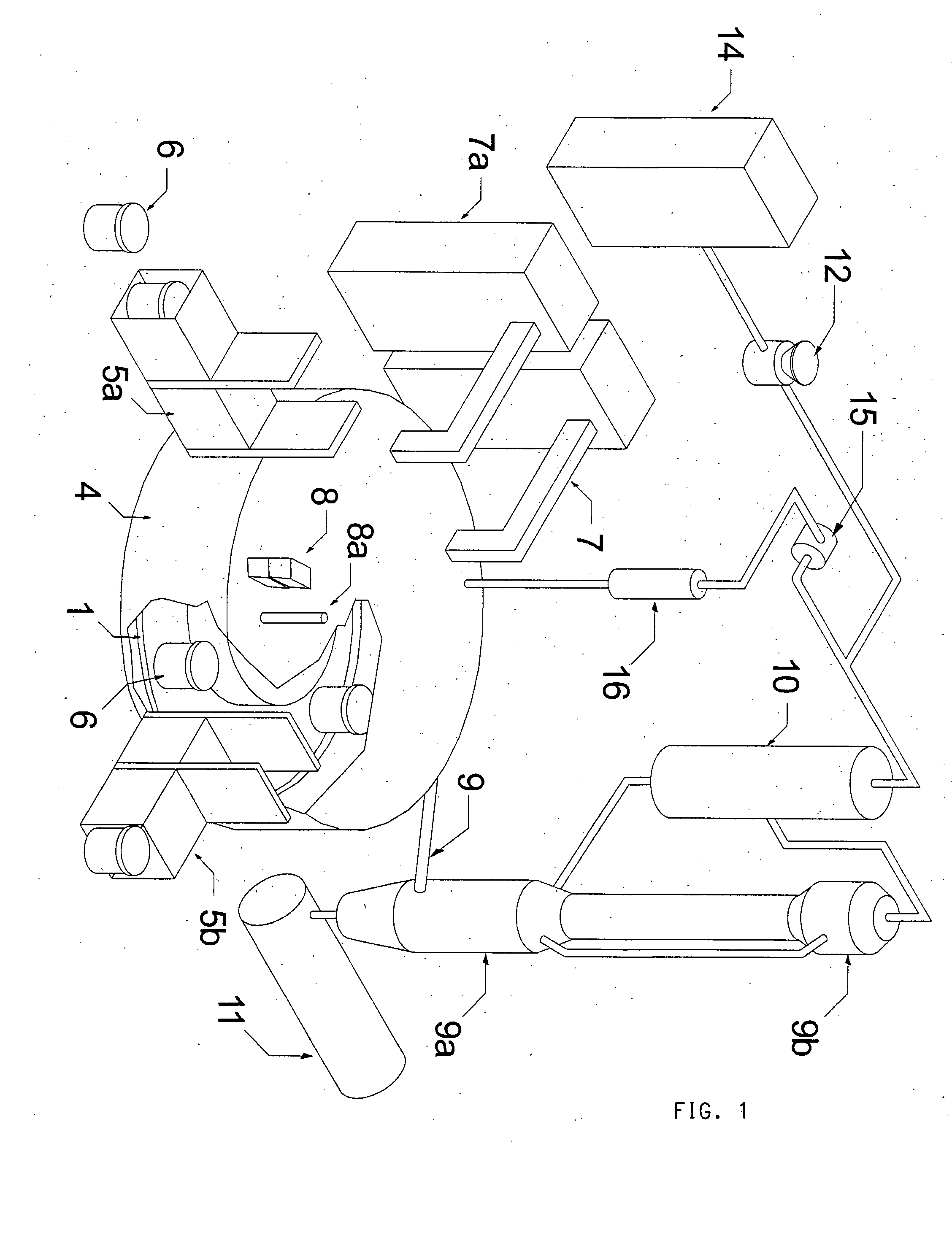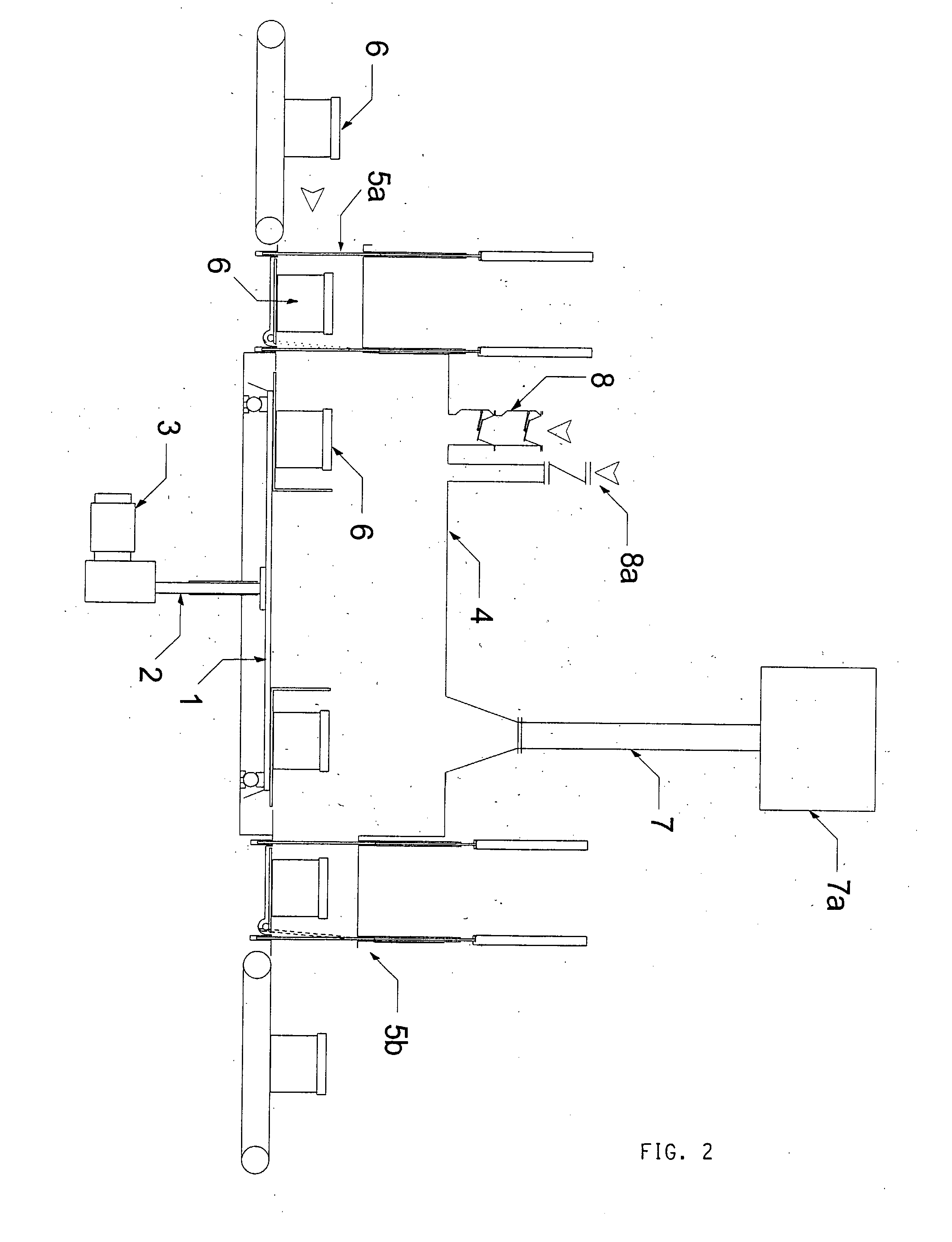Microwave Gasification, Pyrolysis and Recycling of Waste and Other Organic Materials
a technology of pyrolysis and waste, which is applied in the direction of charging devices, energy inputs, transportation and packaging, etc., can solve the problems of increasing waste accumulation, high collection costs and fees, and inability to meet the needs of waste of valuable resources,
- Summary
- Abstract
- Description
- Claims
- Application Information
AI Technical Summary
Benefits of technology
Problems solved by technology
Method used
Image
Examples
Embodiment Construction
[0061]A carousel 1 is rotatable on a vertical shaft 2 driven by an electric motor 3 (FIG. 2). The carousel is disposed close to the base of a closed airtight cylindrical container 4. Feeding airlock 5a permits the insertion of crucibles 6 into the closed airtight container 4, and discharge airlock 5b permits removal of those crucibles after processing. Ports 7 allow the application of microwave energy from generators 7a to heat material in the crucibles 6 within the closed airtight container 4. Solid additives (e.g. catalysts) may be introduced into the closed airtight container 4 through an airlock 8, and liquid additives may be introduced through a liquid feed device 8a.
[0062]As shown in FIG. 1 (but not in FIG. 2) vent 9 allows the removal of gases generated by the microwaves. Gases pass to a distillation column 9a, a condenser 9b, and to scrubber 10. An oil storage tank 11 receives oil condensed from the distillation column 9a.
[0063]Gas from the top of the scrubber 10 may pass ...
PUM
| Property | Measurement | Unit |
|---|---|---|
| decomposition temperature | aaaaa | aaaaa |
| energy | aaaaa | aaaaa |
| velocity | aaaaa | aaaaa |
Abstract
Description
Claims
Application Information
 Login to View More
Login to View More - R&D
- Intellectual Property
- Life Sciences
- Materials
- Tech Scout
- Unparalleled Data Quality
- Higher Quality Content
- 60% Fewer Hallucinations
Browse by: Latest US Patents, China's latest patents, Technical Efficacy Thesaurus, Application Domain, Technology Topic, Popular Technical Reports.
© 2025 PatSnap. All rights reserved.Legal|Privacy policy|Modern Slavery Act Transparency Statement|Sitemap|About US| Contact US: help@patsnap.com



